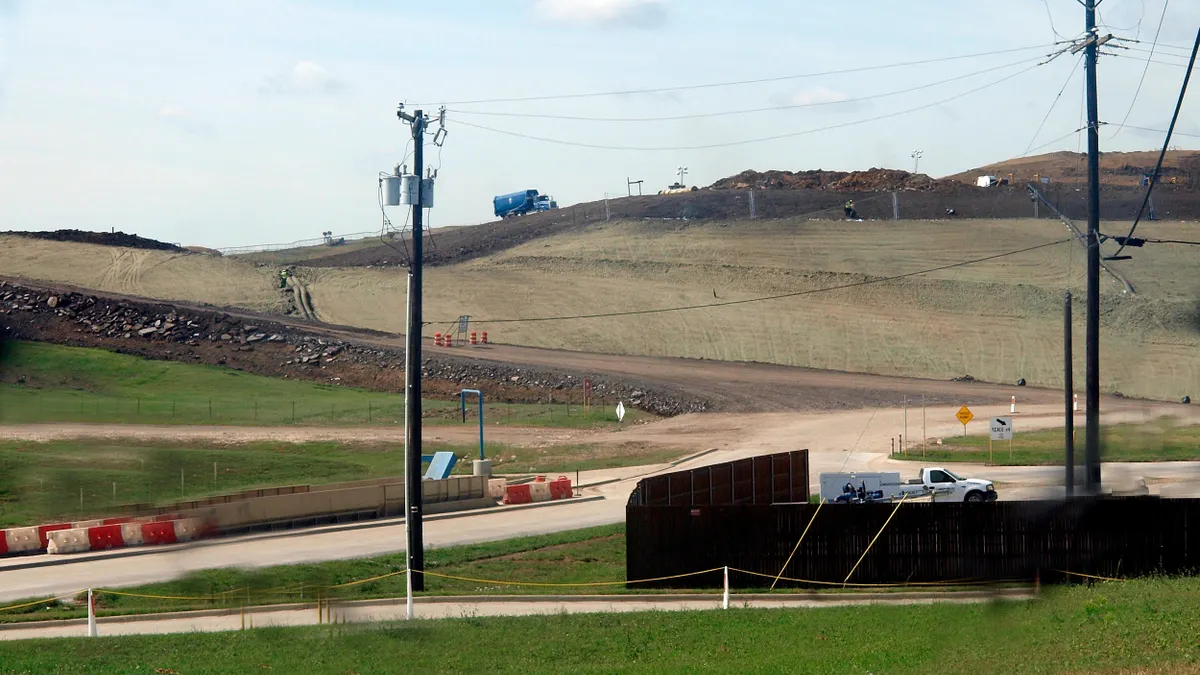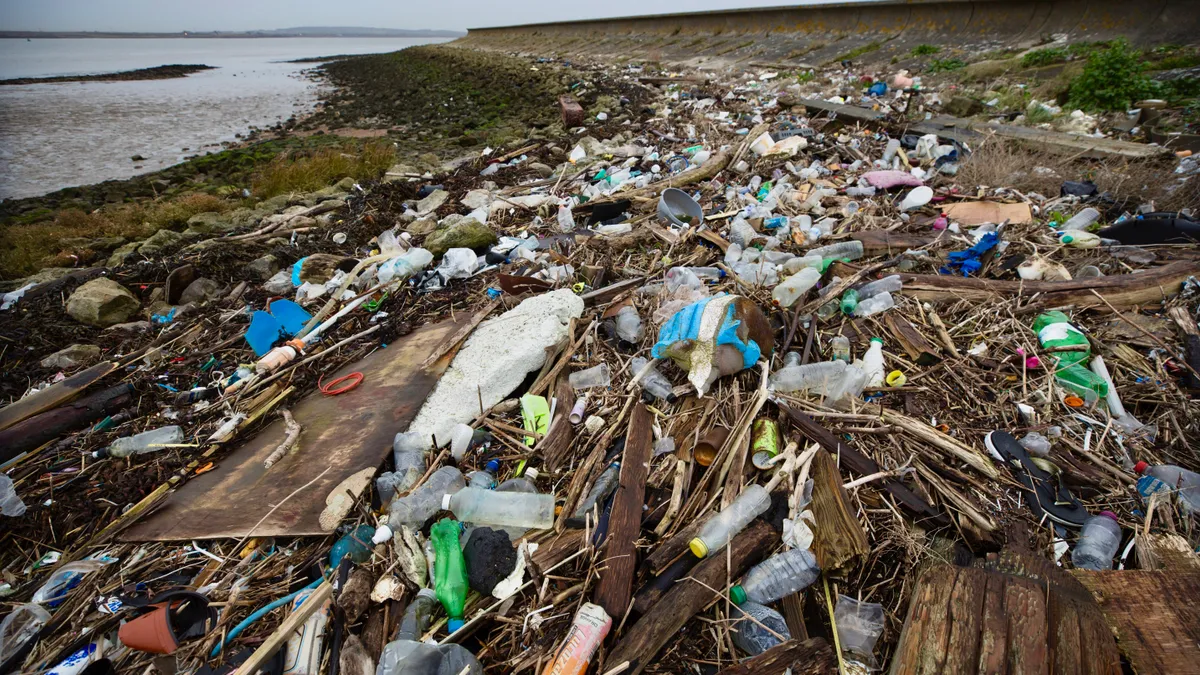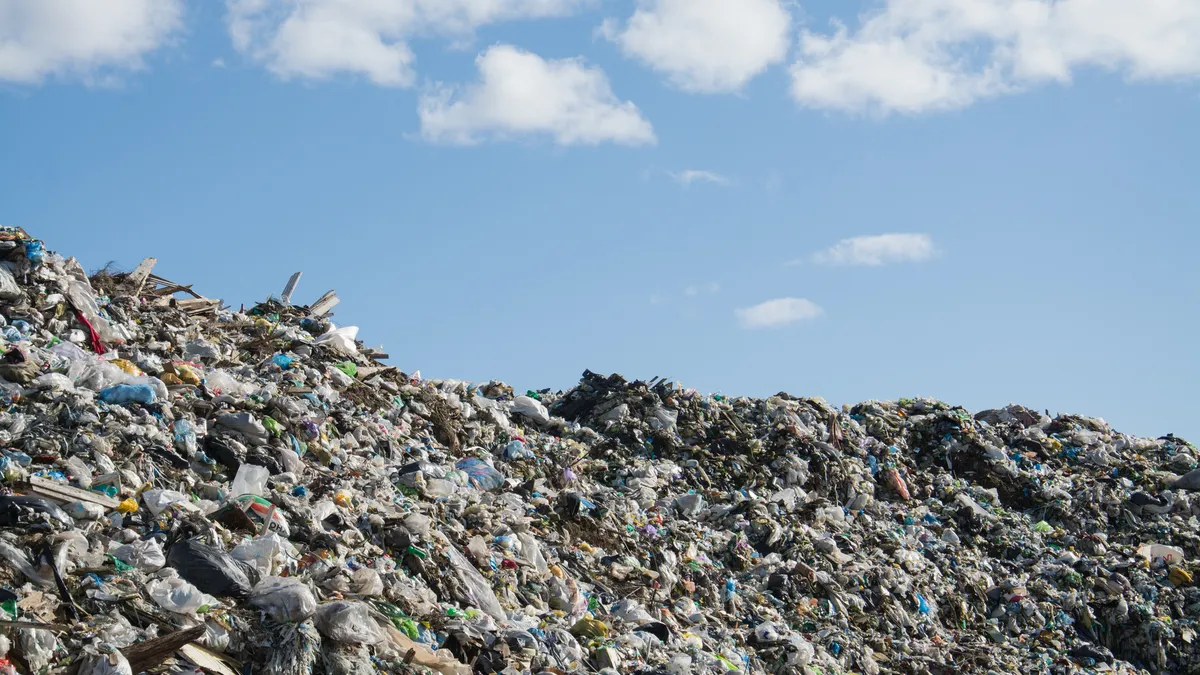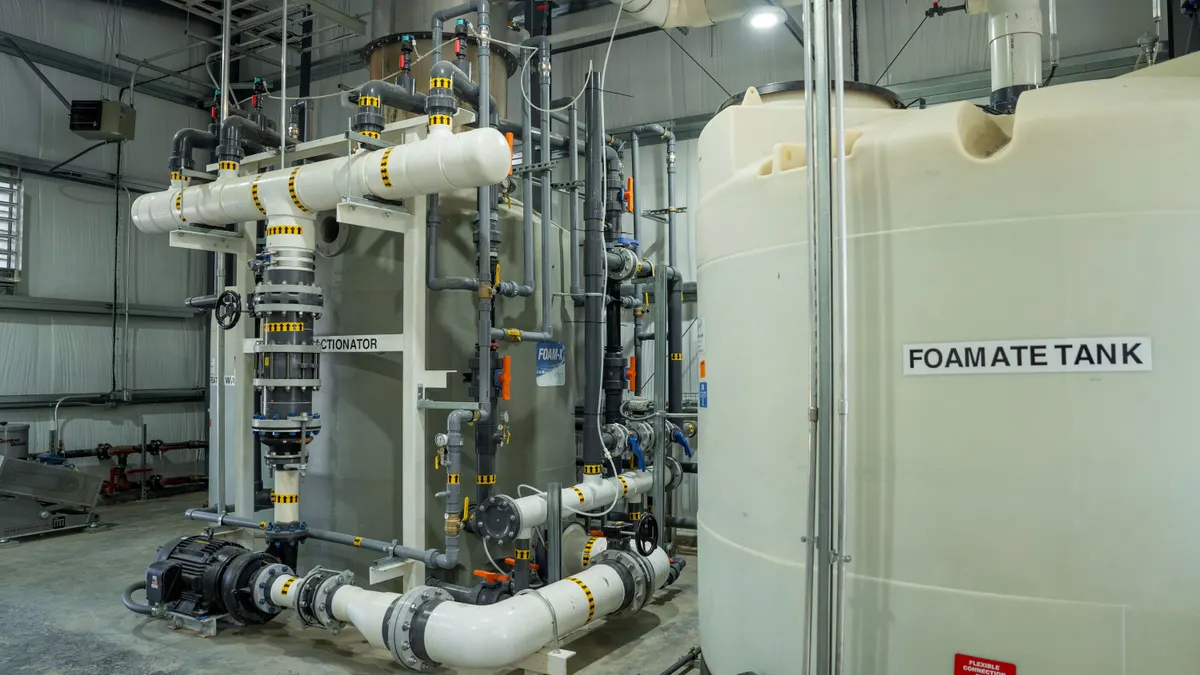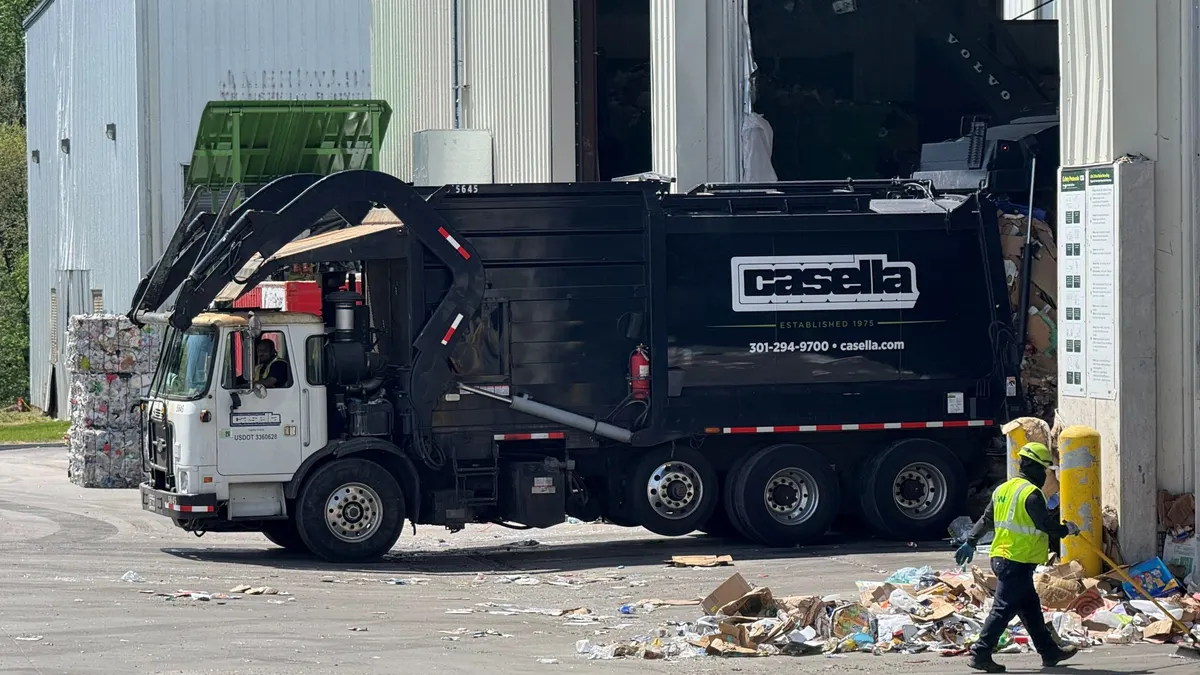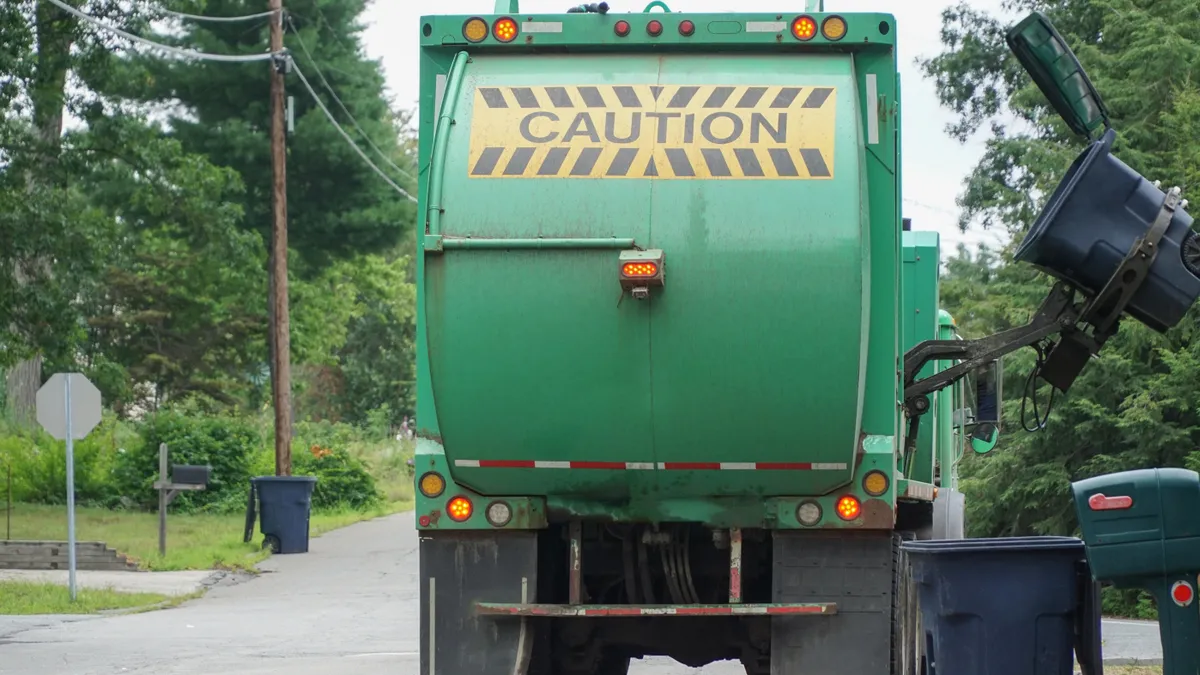Amid questions about how the Trump administration plans to address PFAS in certain liquid waste — known as effluent — from manufacturing facilities, states and water utilities are exploring their own ways to keep contaminated discharges out of drinking water sources.
Under a U.S. EPA rule finalized during the Biden administration, water utilities were required to track six types of per- and polyfluoroalkyl substances and reduce those found to exceed maximum contaminant levels in drinking water. The Trump administration has since announced plans to rescind regulations for four of those substances, but says it still plans to regulate others.
A separate draft rule called for developing guidelines to limit PFAS in effluent released by manufacturers in the organic chemicals, plastics and synthetic fibers sectors, part of the agency’s 2021 PFAS Strategic Roadmap. But the Trump administration’s Office of Management and Budget withdrew the proposed rule in January as part of a broader regulatory freeze.
The EPA recently swung back into action on PFAS, however, when Administrator Lee Zeldin announced plans to move forward with effluent limitations guidelines pertaining to producers of these chemicals as well as metal finishers, for the specific purpose of “stopping PFAS from getting into drinking water systems.”
Spokesperson Molly Vaseliou said the agency will announce further steps in the next few months, but that it is committed to pursuing effluent limitation guidelines in some form.
“EPA recognizes that one of the best ways to address PFAS is at the source,” Vaseliou said in a statement. “In the water space, one way EPA will do that is by considering effluent limitation guidelines (ELG) for PFAS manufacturers and metal finishers.”
Zeldin previously said the agency also plans to evaluate other categories, but did not provide specifics.
The EPA under Biden considered several categories for possible ELGs. It planned to revisit metal finishing in 2026 and landfills in 2027, following the discovery of PFAS in leachate at 95% of landfills in an agency study.
The agency decided not to pursue PFAS guidelines for paper mills, instead opting to continue to monitor the sector’s transition to PFAS-free additives. The agency made a similar decision about textile mills, though it planned to take a closer look at PFAS use in those facilities.
Effects on water system
The Biden EPA’s draft ELGs called for affected facilities to adopt the best available control technologies to curb contamination, which would trap PFAS at the source and ease the burden on water utilities to remove the chemicals when they reach water treatment plants. Many drinking water sources, such as reservoirs, are downstream from effluent discharge pipes.
The uncertainty surrounding PFAS effluent regulations has left states looking for other ways to address the problem.
“When factories or manufacturers aren't subject to federal regulations as to what they’re allowed to release into the environment, obviously, you then will have a heavier burden on utilities to clean up and mitigate those risks once all of the pollutants have already been released into the water systems,” said Mikaela Barbour, an associate with the law firm MG+M.
Concerns about cost are front and center for water utilities, added Brian Gross, a partner with MG+M.
“What you have now is a rule where the maximum contaminant levels are at the level of detection. And so the vast majority of public water systems across the United States do not meet that level currently. And they just don’t have the money to do it,” Gross said.
The American Water Works Association estimates the cost of compliance for utilities could be at least $37 billion in the next five years and at least $2.7 billion annually.
One avenue for addressing PFAS in water is to secure changes to permits issued under the National Pollutant Discharge Elimination System that will limit the chemicals at the source, said Deirdre White, a project manager with the Association of State Drinking Water Administrators.
For example, Michigan requires some companies to install advanced treatment systems to capture certain PFAS before effluent is discharged. North Carolina has similarly mandated that Chemours do this to reduce contamination in the Cape Fear watershed, a PFAS hot spot. The Source Water Collaborative, which White co-chairs, has created a guide for water utilities on how to comment on NPDES permits for facilities that are affecting their drinking water.
“While we really would like EPA to put forth these effluent limitation guidelines, states and water utilities have been taking action to reduce PFAS levels in some of these permits for industrial dischargers and from wastewater dischargers,” White said.
Eleven states have set standards for some types of PFAS in drinking water, according to Safer States’ PFAS tracker. About 30 states have filed lawsuits against PFAS manufacturers for contaminating water supplies. And last year, 3M agreed to pay at least $10 billion to water utilities that had sought compensation for cleanup costs.
Safer States, an alliance of environmental health organizations, previously estimated that at least 29 states — including California, Indiana, Kentucky, Pennsylvania and others — would likely consider policies this year to address PFAS in one way or another. Potential policies include setting water standards, restricting the spread of sludge containing PFAS or barring their use in products.
The changing makeup of PFAS effluent
While DuPont and other manufacturers such as 3M agreed to phase out the production of the forever chemicals PFOA and PFOS back in 2006, an increasing number of novel PFAS are being found in the environment. Thousands of PFAS are still used in goods ranging from nail polish to umbrellas.
With the phaseout of PFOA and PFOS, companies have switched to “short-chain” PFAS types, which can be harder to remove in water systems. But only 29 short-chain PFAS substances can be detected using currently available analytical methods, according to ASDWA. The group says the plethora of new types of PFAS and the limited ability to detect them and analyze their risks poses a problem for state regulators.
Some experts argue that given the pervasiveness of PFAS and the complexity of the problem, federal rules are needed to provide both states and industry with certainty and avoid a patchwork of state measures.
“By the time the Biden administration came in, there were states that were begging the federal government to take some action because there wasn’t a fundamental framework that was addressing these very harmful chemicals, and there wasn’t the science being done as much as we then ramped up to do,” said David Cash, a former EPA Region 1 administrator and co-chair of EPA’s national PFAS Task Force under Biden.
Cash said the Trump administration’s March proposal to eliminate the agency’s Office of Research and Development and lay off 1,000 of its scientists could hamper the agency’s ability to further study how PFAS affects human health.
”It raises the question of how serious the administration is about protecting human health and the environment if you’re going to get rid of the scientists, particularly on this cutting edge issue where there’s still a lot to understand and a lot to learn so that we can better protect our environment and protect human health,” Cash said. “To be abandoning the scientific effort now is incredibly irresponsible.”
Certain industry groups want to see a nuanced approach to any future EPA regulation. The American Chemistry Council said that if the EPA does move forward with PFAS ELGs in some form, then it should consider the complexity that the substances, which number in the thousands, present.
“Importantly, all PFAS are not the same,” a spokesperson for the trade group said in a statement, prior to the EPA’s recent ELG announcement. “They have differing health and environmental profiles. Any decision to move forward with ELGs should include engagement of relevant industry stakeholders and be based on sound science and a thorough understanding of the specific PFAS compounds involved.” ACC also said EPA should ensure that any guidelines “are based on realistic technological capabilities and do not impose undue burdens on manufacturers.”
Meanwhile, the Trump administration’s wider stance on PFAS is still coming into focus. The Biden-era drinking water rule, as well as another rule designating certain types of PFAS as hazardous substances, have both been challenged in federal court by industry groups. The EPA under Zeldin has requested multiple abeyances in those cases this spring. The agency recently confirmed it will support the federal government’s defense against legal challenges to the drinking water standard.








